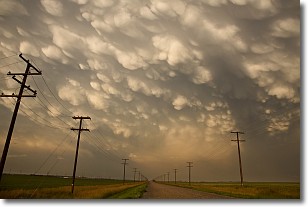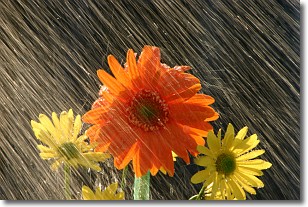Weather Alert in Minnesota
Air Quality Alert issued May 11 at 5:45PM CDT by NWS Aberdeen SD
AREAS AFFECTED: Traverse; Big Stone
DESCRIPTION: * WHAT...The Minnesota Pollution Control Agency has issued an Air Quality Alert for ozone pollution. The Air Quality Index (AQI) is expected to reach the Orange or Unhealthy for Sensitive Groups category. * WHERE...Southwest Minnesota. * WHEN...From noon CDT to 9 PM CDT Monday. * IMPACTS...Sensitive groups, such as people with lung disease (including asthma), heart disease, children and older adults, and people who are active outdoors, may experience health effects. * ADDITIONAL DETAILS...Ground-level ozone is expected to be high during the afternoon hours on Monday across western and central Minnesota. Mostly sunny skies, warm temperatures, and low humidity will create an environment favorable for two types of pollutants (Volatile Organic Compounds and Nitrogen Oxides) to react in the air to produce ground-level ozone. Ozone will be highest during the afternoon and early evening hours when sunshine is most abundant, and temperatures are highest. Ozone will be low in the morning, late evening, and overnight. Another alert is possible on Tuesday afternoon as sunny skies and heat persist.
INSTRUCTION: Sensitive groups, such as people with lung disease (including asthma), heart disease, children and older adults, and people who are active outdoors, should limit prolonged or heavy outdoor exertion. Reduce or eliminate activities that contribute to air pollution, such as outdoor burning, and use of residential wood burning devices. Reduce vehicle trips and vehicle idling as much as possible.
Want more detail? Get the Complete 7 Day and Night Detailed Forecast!
Current U.S. National Radar--Current
The Current National Weather Radar is shown below with a UTC Time (subtract 5 hours from UTC to get Eastern Time).

National Weather Forecast--Current
The Current National Weather Forecast and National Weather Map are shown below.

National Weather Forecast for Tomorrow
Tomorrow National Weather Forecast and Tomorrow National Weather Map are show below.

North America Water Vapor (Moisture)
This map shows recent moisture content over North America. Bright and colored areas show high moisture (ie, clouds); brown indicates very little moisture present; black indicates no moisture.

Weather Topic: What are Mammatus Clouds?
Home - Education - Cloud Types - Mammatus Clouds
 Next Topic: Nimbostratus Clouds
Next Topic: Nimbostratus Clouds
A mammatus cloud is a cloud with a unique feature which resembles
a web of pouches hanging along the base of the cloud.
In the United States, mammatus clouds tend to form in the warmer months, commonly
in the Midwest and eastern regions.
While they usually form at the bottom of a cumulonimbis cloud, they can also form
under altostratus, altocumulus, stratocumulus, and cirrus clouds. Mammatus clouds
warn that severe weather is close.
Next Topic: Nimbostratus Clouds
Weather Topic: What is Precipitation?
Home - Education - Precipitation - Precipitation
 Next Topic: Rain
Next Topic: Rain
Precipitation can refer to many different forms of water that
may fall from clouds. Precipitation occurs after a cloud has become saturated to
the point where its water particles are more dense than the air below the cloud.
In most cases, precipitation will reach the ground, but it is not uncommon for
precipitation to evaporate before it reaches the earth's surface.
When precipitation evaporates before it contacts the ground it is called Virga.
Graupel, hail, sleet, rain, drizzle, and snow are forms of precipitation, but fog
and mist are not considered precipitation because the water vapor which
constitutes them isn't dense enough to fall to the ground.
Next Topic: Rain
Current conditions powered by WeatherAPI.com




